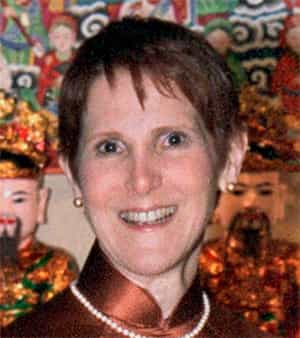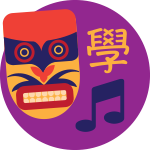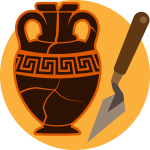Explaining Mythic Creatures
Laurel has curated many exhibits, including Mythic Creatures: Dragons, Unicorns, and Mermaids. What is a mythic creature? For Laurel, the best metaphor is the shadow. Some shadows represent things that are really there, just distorted by size or shape—like the 10-foot tall shadow of your body on a sidewalk. The mythical kraken was like this. People glimpsed the tentacles of the giant squid—a real, living animal. But they imagined the kraken—something larger and more fantastic and dangerous than the real thing. Sometimes a shadow can be misread, like a shadow of a tree that looks like a monster. In the same way, the ancient Greeks found elephant skulls and believed that the giant hole in the "forehead" (actually for the trunk) was the eye of the cyclops. Other shadows we make ourselves to represent something that isn't there at all or something that is invisible. It takes shape through the work of our imagination. The Barong is a mythic creature in Bali that has never been seen. Yet in village festivals, people bring the Barong alive with masks and costumes, and a ritual dance that restores calm and order.
Hometown: San Francisco
Education: PhD, Columbia University
Job: Curator, Division of Anthropology
Current work: How people think about the material goods they use to represent and make offerings to gods and ancestors.
Favorite subject in school: Social Studies
Cool fact: To better understand Korea, Laurel also studied the history and languages of Japan and China.
For a Vietnam exhibit, Laurel included a set of votive paper—paper goods made and burned for ancestors. Some were in the shapes of:
bicycles
television sets
both
Correct!
These goods are an important reflection of the culture. The Vietnamese take care of their ancestors by burning votives in the form of goods that are needed by the dead in the afterlife. They believe that, in turn, their ancestors are protecting them.
In some of Laurel's first fieldwork in Korea, she studied the role of shamans. A shaman is:
a candle lit for ancestors during special ceremonies
someone who mediates between the natural and spiritual worlds
a large communal gathering to celebrate changes in the seasons
Correct!
Although some Koreans consider shamans as "old fashioned," they play an important role in modern society. Laurel found that many people went to shamans to relieve stress and worries about financial matters.
Anthropology is the study of humankind around the world and throughout time. An anthropologist studies:
language and behaviors of present-day cultures
material remains of ancient cultures
both of these
Correct!
Anthropology studies all aspects of humans, from how we evolved to ancient cultures to how we communicate, worship, and interact today. Laurel considers herself an "eclectic" anthropologist—her studies range from political to religious aspects of world cultures.
Korea is a mostly rural culture that had changed little since Laurel did her first fieldwork in the 1970s.
Fiction
Even then, over half the people lived in cities. Returning to Korea many times since then, Laurel watched Korea become an urbanized industrial society that is constantly changing.
I'd like people who visit the Mythic Creatures exhibition to appreciate what the human mind does: our capacity to imagine, to make stories, to perform our stories, and to create mythic creatures through art.

Laurel Kendall, anthropologist




 Biodiversity
Biodiversity
 Brain
Brain
 Genetics
Genetics
 Marine BiOLogy
Marine BiOLogy
 MicrobiOLogy
MicrobiOLogy
 PaleontOLogy
PaleontOLogy
 ZoOLogy
ZoOLogy
 AnthropOLogy
AnthropOLogy
 ArchaeOLogy
ArchaeOLogy
 Astronomy
Astronomy
 Climate Change
Climate Change
 Earth
Earth
 Physics
Physics
 Water
Water
